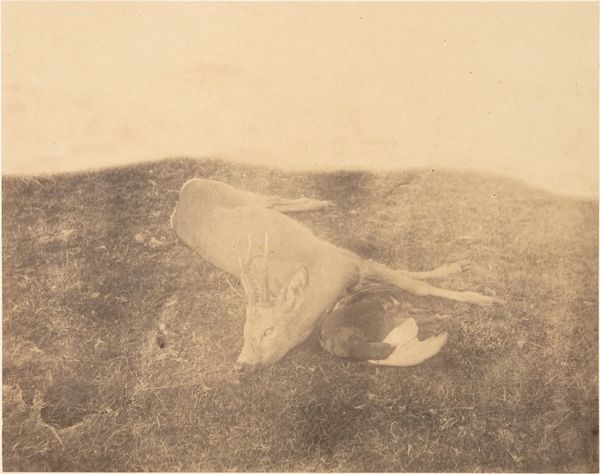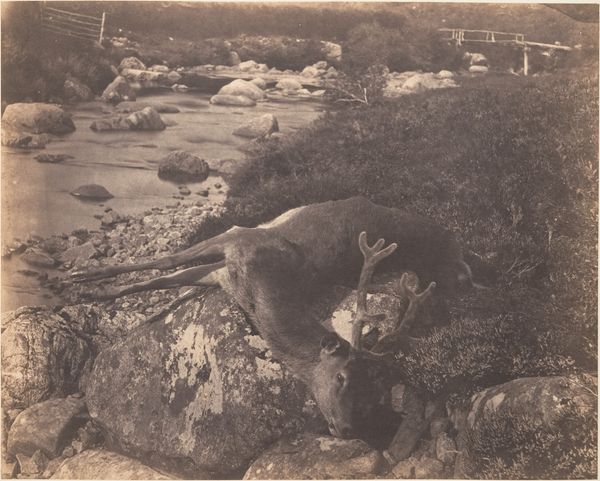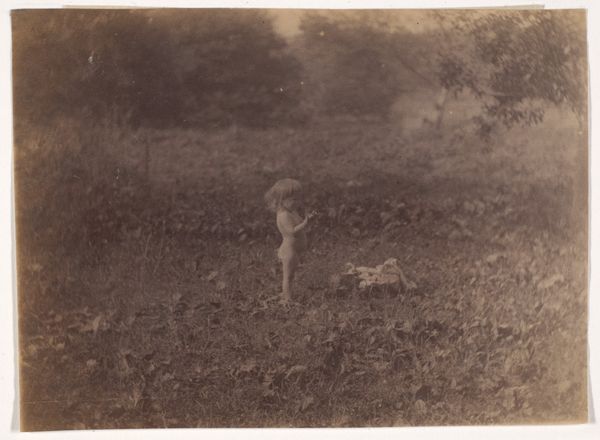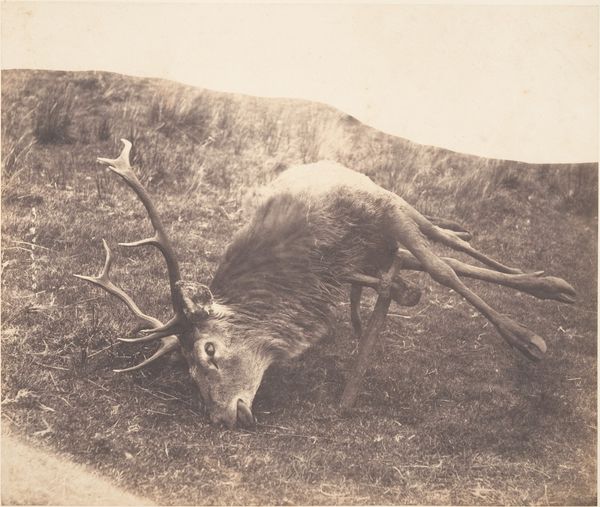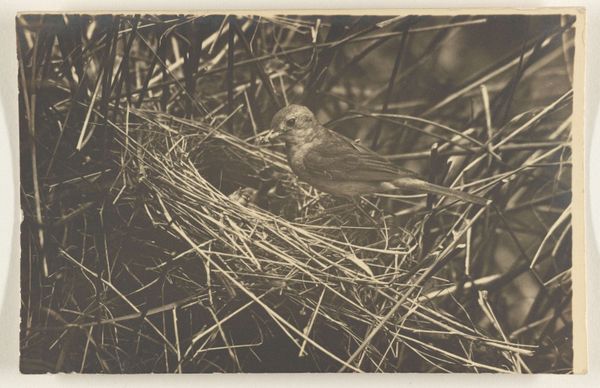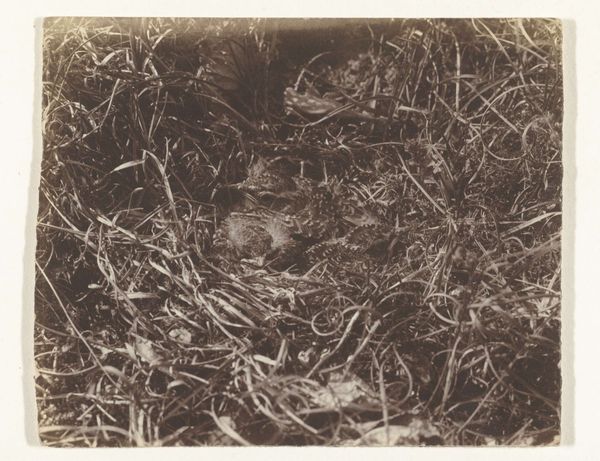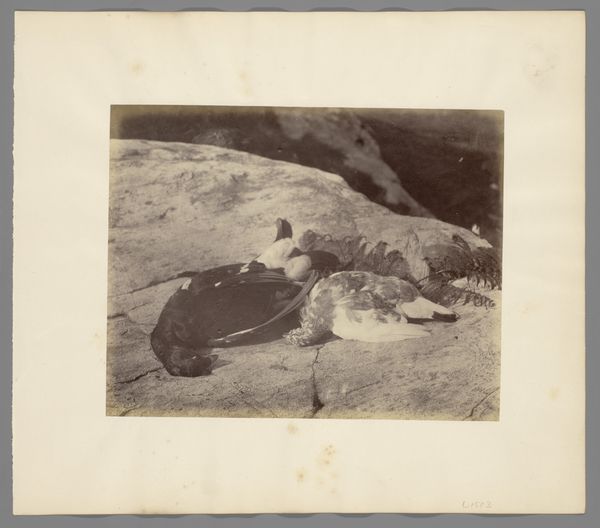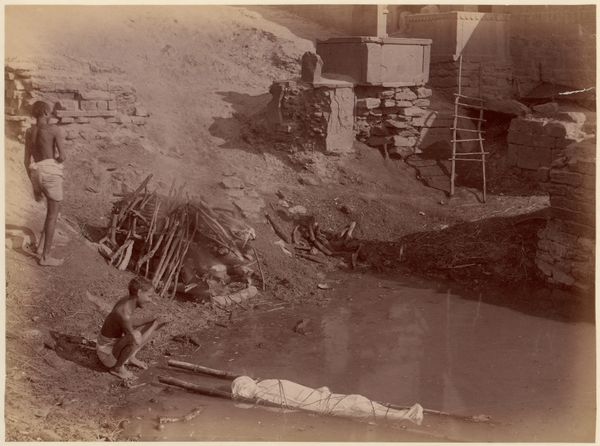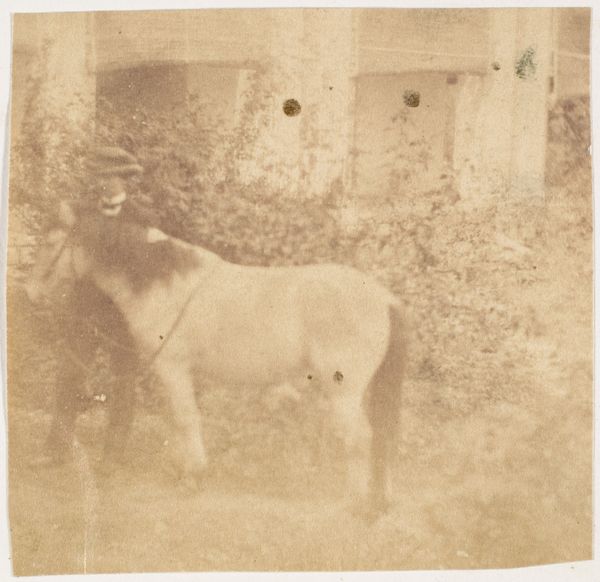![[Dead Female Deer and Game Bird] by Horatio Ross](/_next/image?url=https%3A%2F%2Fd2w8kbdekdi1gv.cloudfront.net%2FeyJidWNrZXQiOiAiYXJ0ZXJhLWltYWdlcy1idWNrZXQiLCAia2V5IjogImFydHdvcmtzLzZmOGYzNjE5LTA0MTUtNGI4Ni05ODdiLWY0OGExYjY1NzFiZC82ZjhmMzYxOS0wNDE1LTRiODYtOTg3Yi1mNDhhMWI2NTcxYmRfZnVsbC5qcGciLCAiZWRpdHMiOiB7InJlc2l6ZSI6IHsid2lkdGgiOiAxOTIwLCAiaGVpZ2h0IjogMTkyMCwgImZpdCI6ICJpbnNpZGUifX19&w=3840&q=75)
photography
#
still-life-photography
#
charcoal drawing
#
photography
#
realism
Dimensions: 17.8 x 23.8 cm (7 x 9 3/8 in.), oval
Copyright: Public Domain
Curator: This stark photograph is titled '[Dead Female Deer and Game Bird]' and it was captured between 1856 and 1859 by Horatio Ross. Editor: My immediate impression is one of unsettling stillness. The subdued sepia tones enhance a palpable sense of mortality and what looks like vulnerability of the slain creatures. Curator: Indeed. This photographic still life forces us to confront hunting culture in the mid-19th century, which was deeply connected to displays of status and access to land ownership in ways we often romanticize. Editor: Absolutely, there's a narrative of power woven within it. Who possessed the power to take these lives, and how does this image reflect Victorian era values, with their simultaneous reverence for nature and embrace of its conquest? Curator: Moreover, what about the placement? The deer laid out before a stone wall with a barely visible dark entrance into a space we can’t even see. Is this meant to communicate something about the spoils of the hunt and this hidden or secretive chamber, and if so, who was invited in and who wasn’t? Editor: Good points, and it seems to be pushing questions around class. The realism almost feels like a challenge – a statement that this reality, this hunting, exists, no matter how stark it might appear to a contemporary audience who have different relationships with the realities of food acquisition. Curator: That is incisive, considering that during the 19th century photography was viewed as this transparent, documentary medium that simply captured objective reality, however that was always, of course, an ideological project that shaped how hunting, as an act and institution, was legitimized. Editor: It speaks volumes that, even in something so apparently simple, these layers of history, identity, and the politics of representation unfurl. What's recorded, and why, echoes loudly even now. Curator: Precisely. Thinking about the impact and enduring fascination with the hunting photograph and the relationship to socio-political systems definitely complicates our views. Editor: It leaves me thinking about access, not only to land but to representation itself, and who gets to shape those images.
Comments
No comments
Be the first to comment and join the conversation on the ultimate creative platform.
